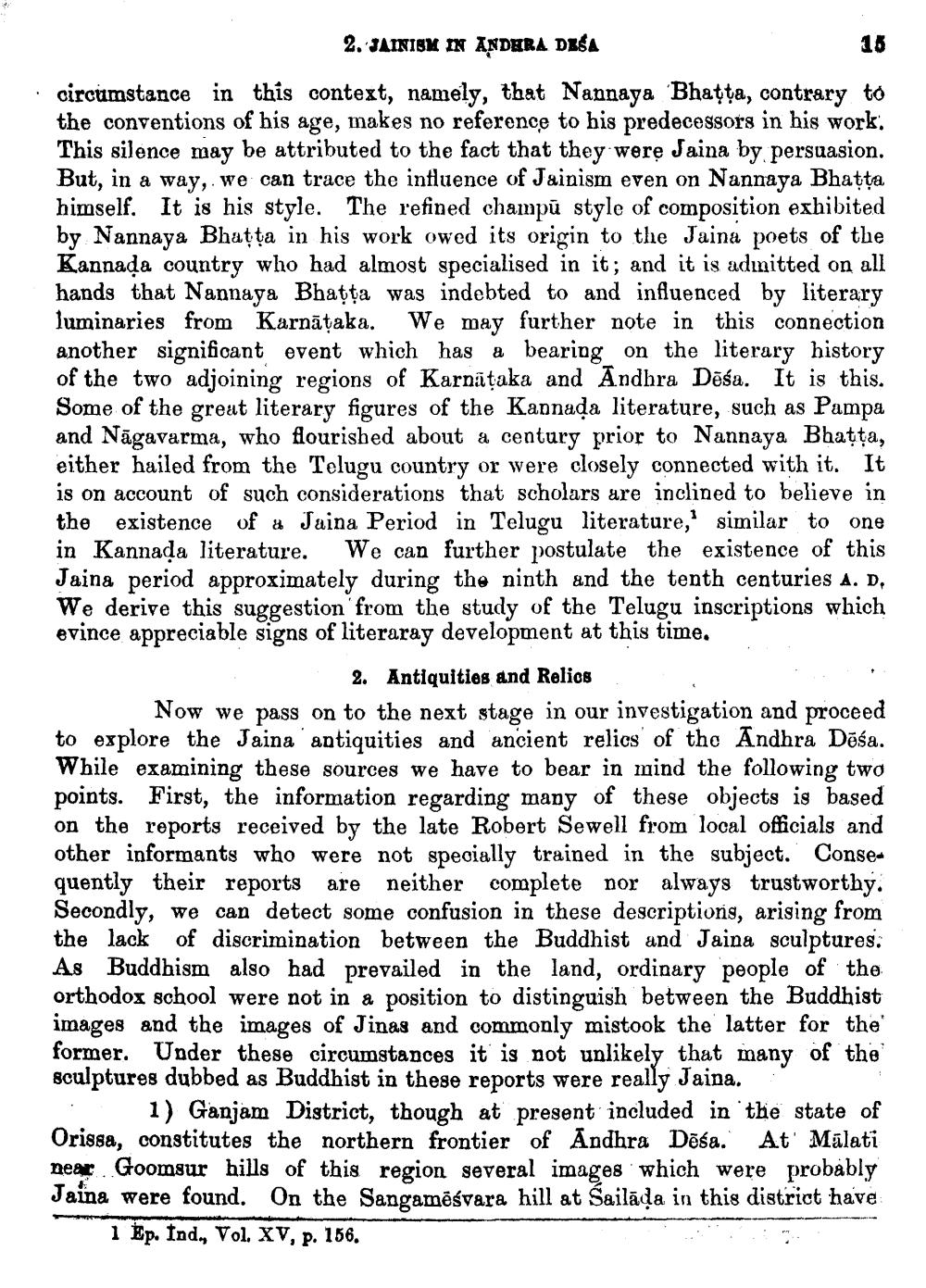________________
2. JAINISM IN ANDHRA DESA
18 · circumstance in this context, namely, that Nannaya Bhatta, contrary to
the conventions of his age, makes no reference to his predecessors in his work. This silence may be attributed to the fact that they were Jaina by persuasion. But, in a way, we can trace the influence of Jainism even on Nannaya Bhatta himself. It is his style. The refined champū style of composition exhibited by Nannaya Bhatta in his work owed its origin to the Jaina poets of the Kannada country who had almost specialised in it; and it is adınitted on all hands that Nannaya Bhatta was indebted to and influenced by literary luminaries from Karnāțaka. We may further note in this connection another significant event which has a bearing on the literary history of the two adjoining regions of Karnāțaka and Andhra Dēša. It is this. Some of the great literary figures of the Kannaďa literature, such as Pampa and Nāgavarma, who flourished about a century prior to Nannaya Bhatta, either hailed from the Telugu country or were closely connected with it. It is on account of such considerations that scholars are inclined to believe in the existence of a Jaina Period in Telugu literature,' similar to one in Kannada literature. We can further postulate the existence of this Jaina period approximately during the ninth and the tenth centuries A. D. We derive this suggestion from the study of the Telugu inscriptions which evince appreciable signs of literaray development at this time.
2. Antiquities and Relios Now we pass on to the next stage in our investigation and proceed to explore the Jaina antiquities and ancient relics of the Andhra Dēśa. While examining these sources we have to bear in mind the following two points. First, the information regarding many of these objects is based on the reports received by the late Robert Sewell from local officials and other informants who were not specially trained in the subject. Conse. quently their reports are neither complete nor always trustworthy. Secondly, we can detect some confusion in these descriptions, arising from the lack of discrimination between the Buddhist and Jaina sculptures: As Buddhism also had prevailed in the land, ordinary people of the orthodox school were not in a position to distinguish between the Buddhist images and the images of Jinas and commonly mistook the latter for the former. Under these circumstances it is not unlikely that many of the sculptures dubbed as Buddhist in these reports were really Jaina.
1) Ganjam District, though at present included in the state of Orissa, constitutes the northern frontier of Andhra Dēsa. At' Mālati near Goomsur hills of this region several images which were probably Jaina were found. On the Sangamēśvara hill at Sailāda in this district have
1 Ep. Ind. Vol. XV, p. 166.




